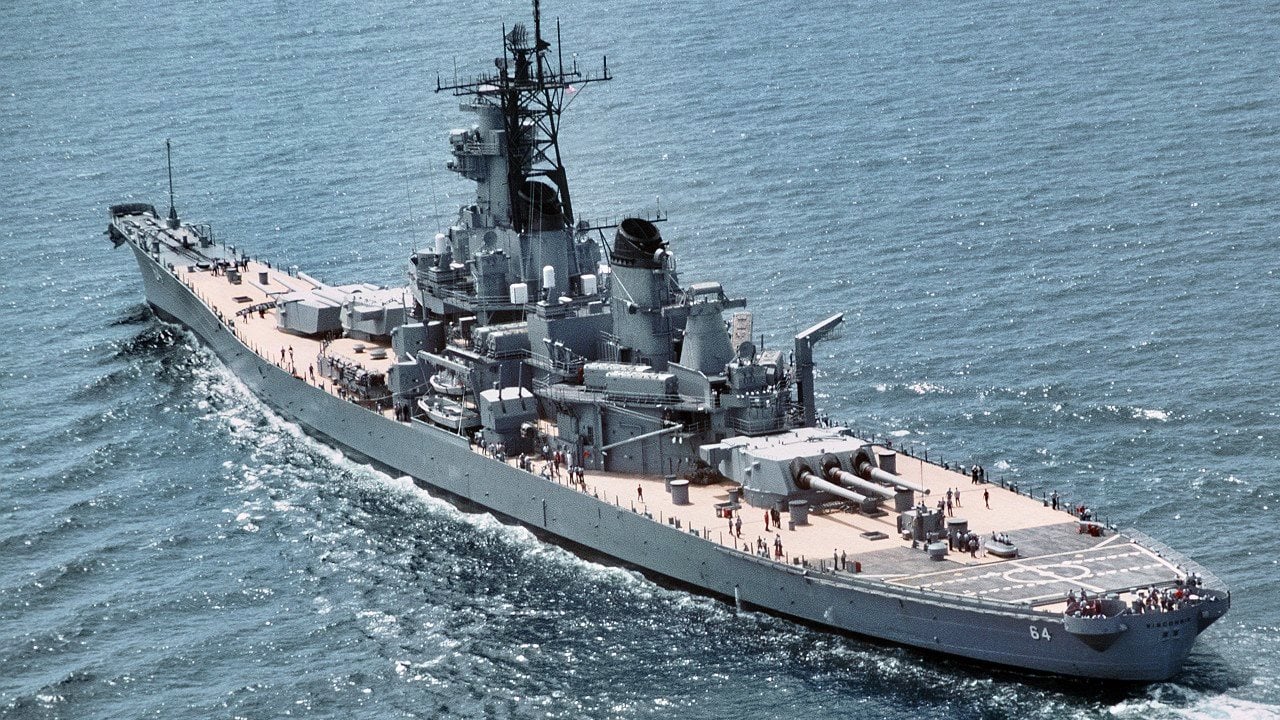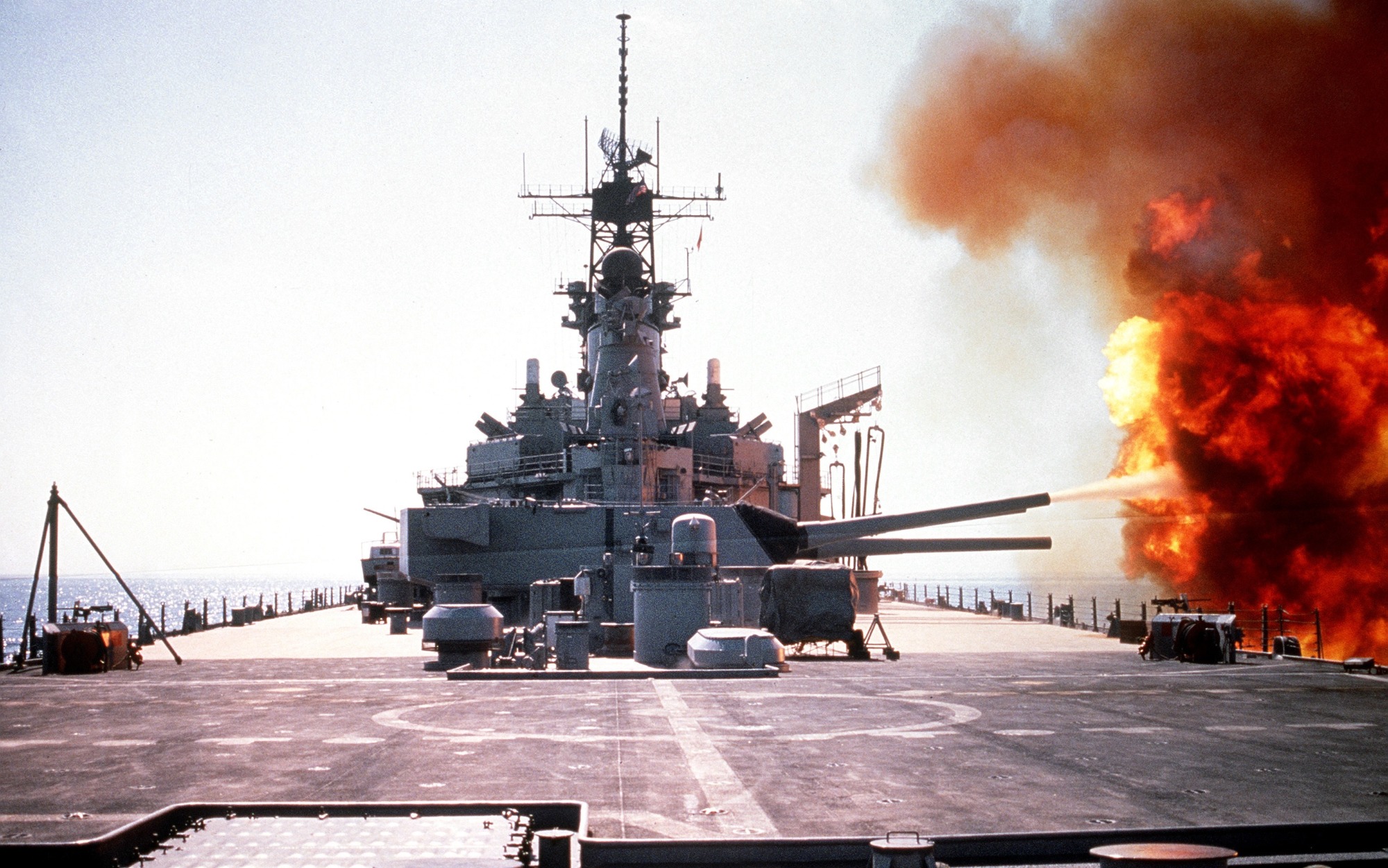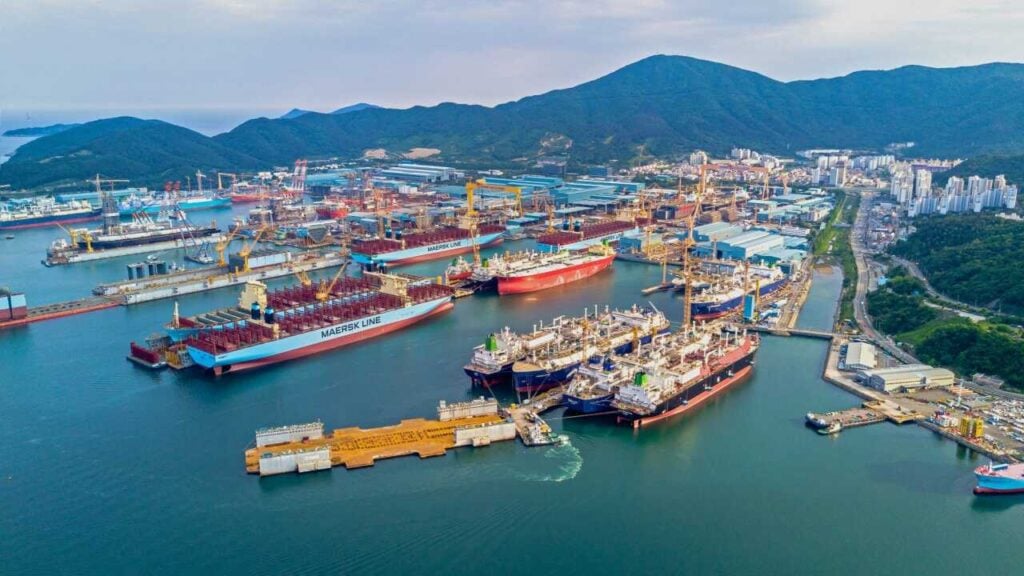
Iowa-Class Battleship USS Wisconsin Sailed Through 2 Typhoons
What You Need to Know: The USS Wisconsin (BB-65), one of the formidable Iowa-class battleships, faced not just the enemy during World War II but also the wrath of nature. In December 1944, during the liberation of the Philippines, Wisconsin was caught in Typhoon Cobra, which devastated the U.S. Navy’s Third Fleet, sinking three destroyers and killing 790 sailors.

-Remarkably, Wisconsin survived the deadly storm unscathed. Less than six months later, the battleship endured another typhoon, escaping severe damage once again.
-After serving in multiple key battles, including the bombardment of Japan, USS Wisconsin dropped anchor in Tokyo Bay, ending her service with an extraordinary history of defying both enemy fire and nature’s fury.
Facing Typhoons and Enemies: The Untold Story of USS Wisconsin (BB-65)
For a warship, it is best not to be in the path of big storms.
But that wasn’t the case in December 1944, when one of the largest and most battleships ever built faced a mammoth typhoon that was as dangerous to the crew as anything the enemy could have mustered.
The Coming Storm
One of the four Iowa-class battleships constructed during the Second World War, USS Wisconsin (BB-65) had only completed her sea trials in the summer of 1944, before being sent to the Pacific. She arrived in time to take part in the liberation of the Philippines in the late fall, and was preparing for the coming invasion of Mindoro – providing protection to the United States Navy’s Third Fleet’s Fast Carrier Task Force (TF) 38, as they conducted air raids over Manila to soften up Japanese positions.
The following day, disaster struck – in this case, a natural disaster as Typhoon Cobra ( sometimes known as Halsey’s Typhoon) quickly moved in and caught many of the ships refueling and with little ballast in their nearly dry bunkers. The storm swept over seven fleet carriers, six light carriers, eight battleships, 15 cruisers, and about 50 destroyers. Some aircraft were literally blown off the decks, while 10 vessels were seriously damaged.
Mother Nature had proven to be as devastating to the American fleet as the Imperial Japanese Navy, as three destroyers including USS Hull (DD-350), USS Monaghan (DD-354), and USS Spence (DD-512) all capsized and sank – killing everyone on board.
By the time Cobra passed, 790 men were lost and 80 were injured, yet despite having two sailors injured, USS Wisconsin managed to power through the typhoon unscathed.
Such a storm was also depicted in a critical scene in Herman Wouk’s novel, and later the film adaptation, The Caine Mutiny.
USS Wisconsin: Surviving a Second Storm
Less than six months after enduring Typhoon Cobra – followed by actions on Okinawa – BB-65’s crew had to endure another typhoon. It came after the battle wagon was forced to change course for an alternate fueling location in April to avoid an approaching storm. In June, USS Wisconsin wasn’t able to outrun another typhoon and instead had to ride out the storm.
Again, she was largely unscathed, but three cruisers, two carriers, and a destroyer suffered serious damage.

A month later, the battleship was again part of Admiral Halsey’s Third Fleet – the greatest mass of sea power ever assembled. She participated in the bombardment of numerous Japanese facilities, and in September 1945 was among the warships to drop anchor in Tokyo Bay – where she joined her sister battleships.
The battleship had been continuously at sea on the front line for periods of months at a time and had steamed 105,831 miles since her commissioning.
After surviving multiple battles, dodging one typhoon, and riding out two more, no doubt the crew was happy to be among the victory fleet in the calm waters of Japan. USS Wisconsin truly made some impressive history.
About the Author
Peter Suciu is a Michigan-based writer who has contributed to more than four dozen magazines, newspapers, and websites with over 3,000 published pieces over a twenty-year career in journalism. He regularly writes about military hardware, firearms history, cybersecurity, and international affairs. Peter is also a Contributing Writer for Forbes. You can follow him on Twitter: @PeterSuciu.
Main image is Shutterstock. All other images are Creative Commons.


